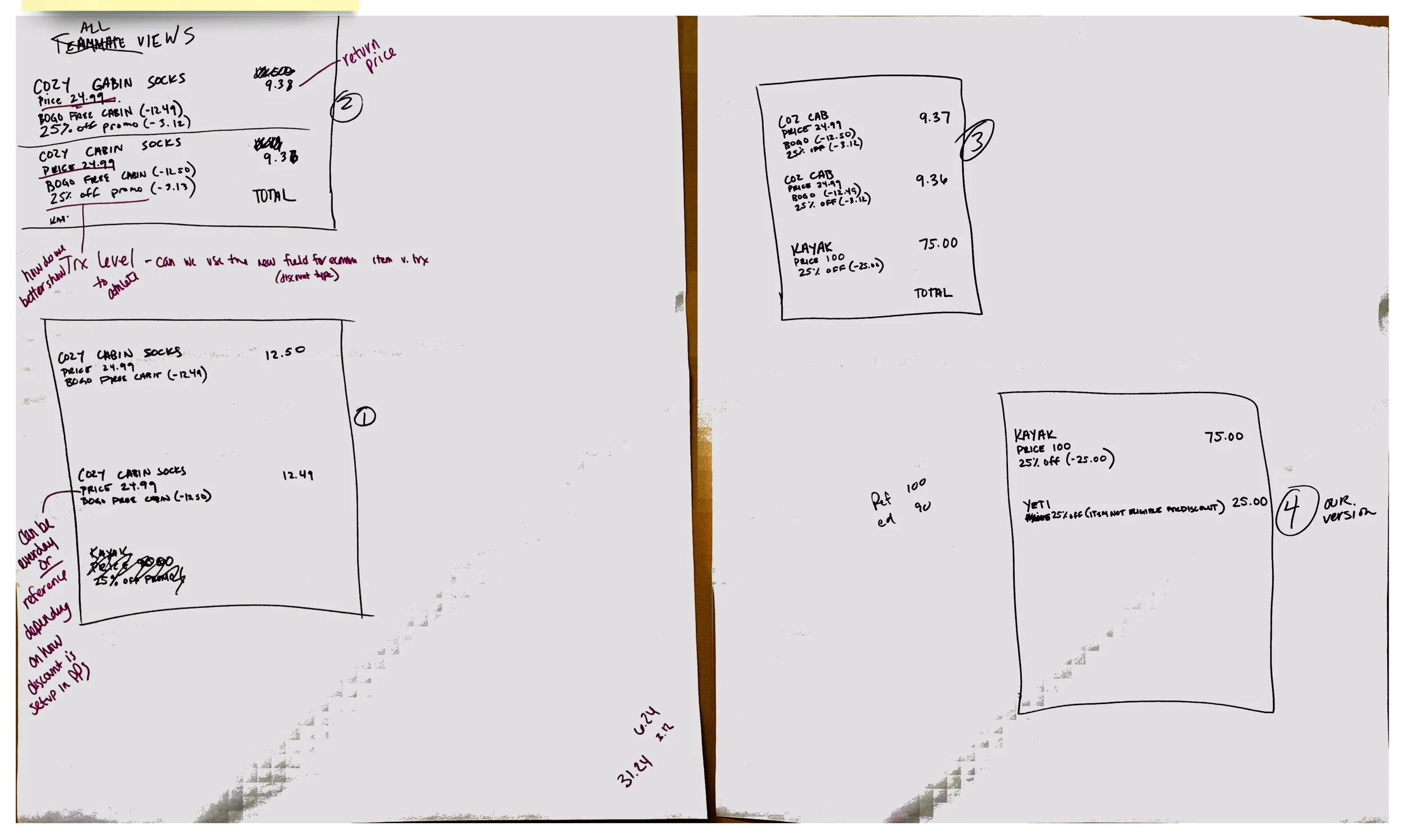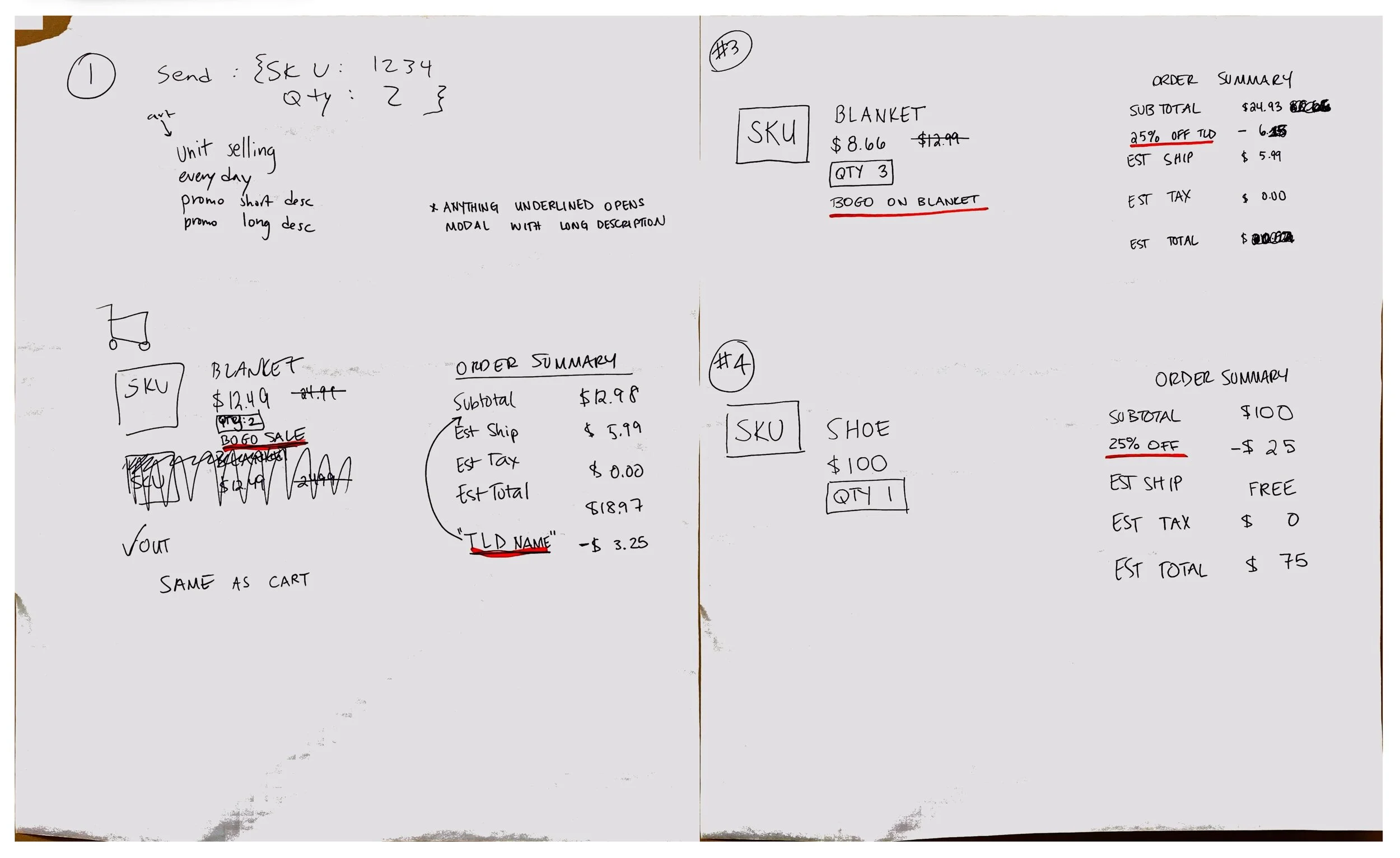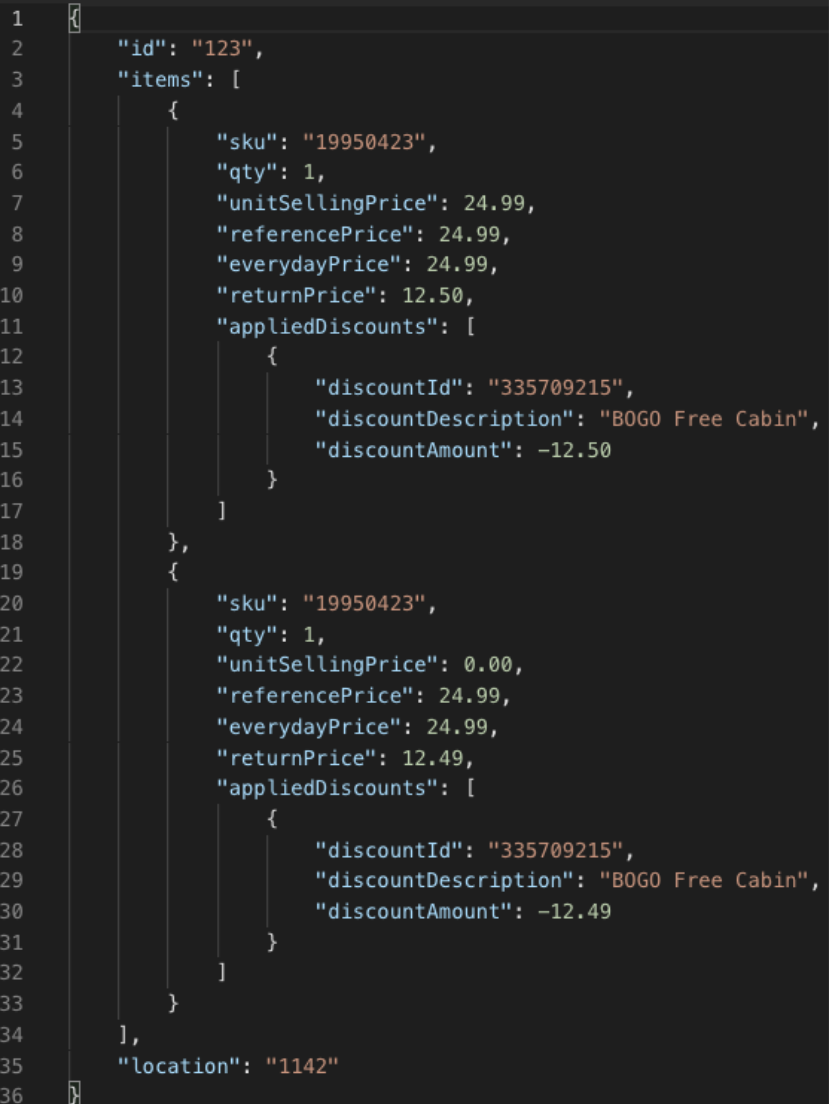Bringing design thinking to API design at DICK’S Sporting Goods
User experience // design thinking Workshop
Role
Senior User Experience Designer at DICK'S Sporting Goods
Tools & Methods
Design thinking facilitation, whiteboarding
Overview
The pricing technology team is responsible for all tools and services that manage prices for DICK’S Sporting Goods (DSG). One of the key components of our work is building services that deliver and calculate prices for customer-facing and internal technology.
This example focuses on our price determination service, which is essentially the calculator that looks at the regular price of an item and calculates what a customer will pay based on any other factors such as discounts or other circumstances.
Early versions of our price determination service could only calculate very specific types of transactions. We needed to expand the functionality of our price determination service to gain more internal customers such as our Point of Sale and eComm Cart.
The problem
Prior to this point, our API responses were discussed in meetings, over phone calls, and caused much back and forth communication. The product teams consuming our data had trouble understanding our structure and rationale, and we were having trouble understanding their use cases.
Finding a solution
How might we structure an API that reflects our customers’ experience of pricing?
To address this, I planned and (with engineers from my team) conducted a design thinking workshop with two of our key consumers - the Point of Sale product team, and the eComm Cart product team.
Empathize
I had each consumer team sketch out on the whiteboard the customer journey through their respective platforms - making sure to highlight where pricing data was expected to show up from a customer perspective.
Point of Sale receipt sketch
eComm cart sketch
This approach allowed our team to better understand the customer journey and build empathy with our own consumers (the two teams) about the data they needed to present and the research they conducted to arrive at that point.
Define
With our new understanding of the pricing data needed we quickly identified what pieces were missing from the current version of our price determination service.
Sample service response
Ideate
One of our engineers led the ideation portion of our workshop. Using the list of data points and the sketches from the first part of the session, we played around with different possible responses that would give our consumers the data they needed in the correct format for them.
Prototype
We took the potential solutions and prototyped mock service responses. By doing this while we were in the same room as our users, we were able to quickly align on these ideas and chart a path forward.
Outcome
A more cohesive price experience for DICK’S Sporting Goods customers
This session yielded even better results than we anticipated. On top of better understanding our consumers’ requirements, it spawned conversations between the participating teams on customer exposure to price data in general and ways to bring a more unified experience across all channels.
As we continue to build our price determination service, we will incorporate feedback from sessions like these and iterate as we test and see how customers, both internal and external, respond to the way we expose pricing information.
Finalized map of pricing data customers see through the eComm funnel
Reflection
All too often designers believe their work ends where the UI stops. This workshop showed the power of centering the team on the customer experience, even if the ‘thing’ you are building is mostly in backend systems and technical implementations.
It is also important to always challenge assumptions, no matter how sure you are. One of our mistakes early on was assuming we understood what our consumers needed since they worked in the same department as us. By skipping past understanding our consumers, we delivered data that wasn’t quite what was needed.
Going forward, this workshop is a format we will return to as we continue to better understand how the organization generates and consumers pricing data.




